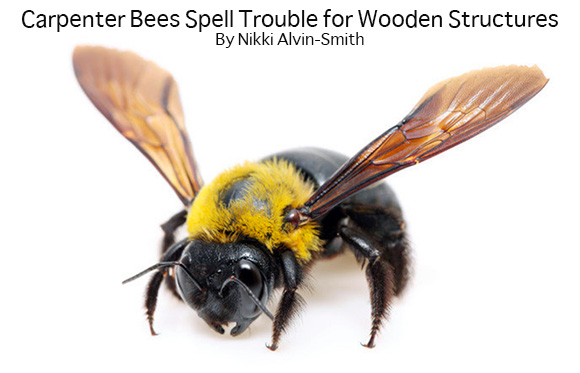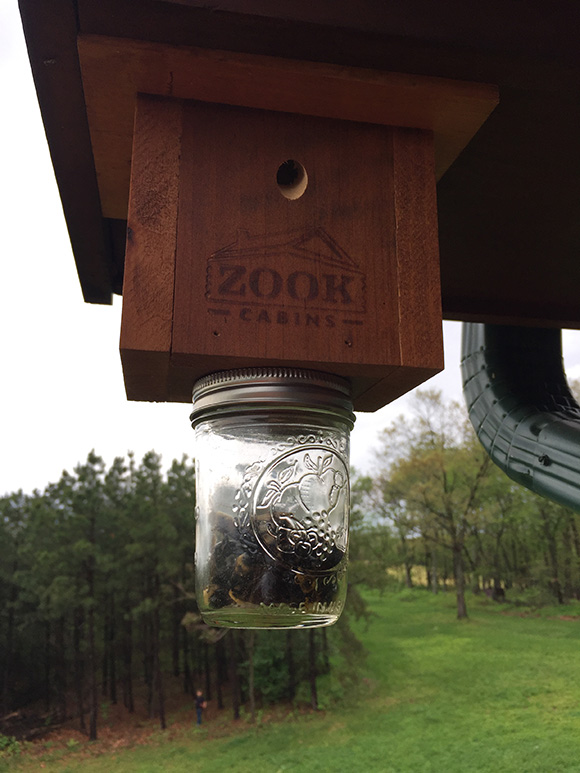Carpenter Bees Spell Trouble for Wooden Structures
By Nikki Alvin-Smith
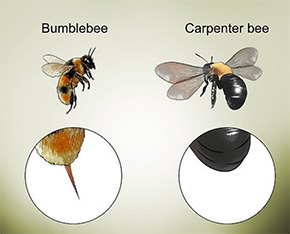 When you hear that loud buzzing up under the eaves of your barn or log home you won’t be surprised to see a large fuzzy bee is responsible for the sound. If the bee is super large it could be a bumble bee or it could be a carpenter bee. How to tell the difference? The carpenter bee has a shiny abdomen whereas the bumble bee will be covered in a fuzzy hair all over its body.
When you hear that loud buzzing up under the eaves of your barn or log home you won’t be surprised to see a large fuzzy bee is responsible for the sound. If the bee is super large it could be a bumble bee or it could be a carpenter bee. How to tell the difference? The carpenter bee has a shiny abdomen whereas the bumble bee will be covered in a fuzzy hair all over its body.
Male carpenter bees are quite aggressive, often hovering in front of people who are around the nests. The males are quite harmless, however, since they lack stingers. Female carpenter bees can inflict a painful sting but seldom will unless they are handled or molested.
The carpenter bee delights in boring holes in certain types of wood and loves old wood in particular. The perfectly round holes they make in wood with their powerful mandibles, are their method of providing a nest for their egg laying. Carpenter bees don’t actually eat the wood, they just gnaw big holes, often in a line.
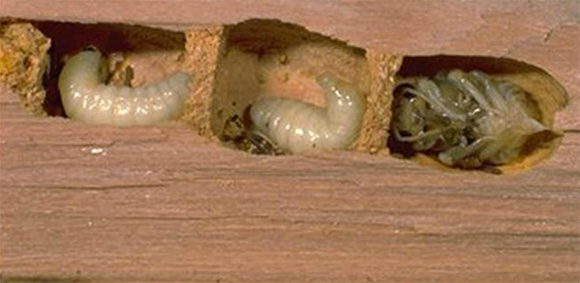
The holes themselves while unsightly may not cause structural damage to your structure unless there is an abundance of activity, but unfortunately Mother Nature has a cycle of life that in this case includes the woodpecker. Woodpeckers love to dine on the eggs the carpenter bees have produced. Woodpeckers are attracted to the noise of the bee larvae and when a woodpecker has located the carpenter bees egg storage, the question is how does the woodpecker pull his dinner from the holes? Simple. He pecks and pecks along the beam, rafter or piece of wood and can create sincere damage to the integrity of the wood.
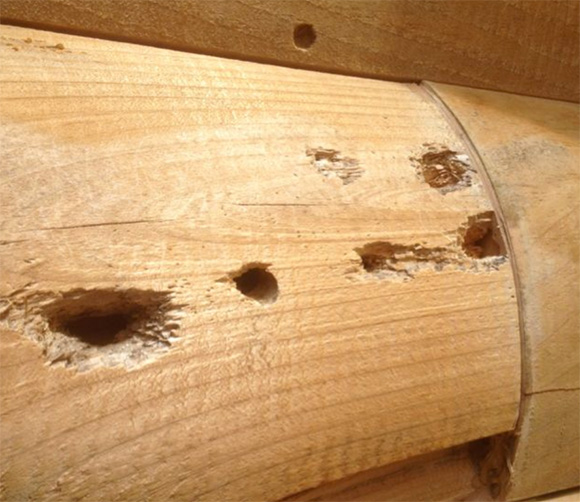
Carpenter bees are traditionally considered solitary bees. Solitary bees tend to be gregarious and often several nests of solitary bees are near each other. In solitary nesting, the founding bee forages, builds cells, lays the eggs, and guards. Normally, only one generation of bees live in the nest. This means your barn or wooden structure is likely to have more than one bee set up storage in your building.
Carpenter bees will also stain the wood with an unattractive dark residue.
Eradication of the carpenter bee is a good idea if you would like to preserve the integrity and beauty of your building. Many methods can be applied to evict the carpenter bee, including chemical sprays that may or may not reach the nests. The carpenter bee traditionally nests high in the rafters or eaves.
The problem with chemical sprays is that they are not eco-friendly. You may have children, or pets of various descriptions, and using a chemical application can be expensive and risky to those using the space. Particularly if pets or animals such as horses are feeding beneath, where their food source may become contaminated. If you use baits, the smell may become unpleasant and your family dog may investigate the bait at his peril.
A simple and highly effective solution that is eco-friendly, non toxic and doesn’t smell is the The Amish bee trap.
The Amish Bee Trap mimics a standard nest. The pine traps attract the lazy carpenter bees with their specific sized diameter holes drilled into the wooden base. These holes are angled upward as this shuts off the light source once the bee is inside the trap. The bees opt for the inviting hole which saves them a lot of drilling work and once inside the bee will realize this location is not perfect for its nesting purpose and try to exit.
Naturally, it heads for the light. This is provided through the glass jar at the bottom of the Amish Bee Trap. However, once the bee heads into the jar the bee is trapped, as it cannot fly upwards or return to the wooden box of the trap. As an added bonus, the death of the bee results in a pheromone releases which attracts other carpenter bees to the trap.
The Amish bee trap enjoys a successful rate of bee eradication and can easily be emptied when full without the need for any additional spending for new bait or new product. It works best when it is hung high under the eave where the bees naturally discover it on their search for a nesting option.
You can purchase one, or purchase several and hang them around your property to ensure your beautiful log home or horse barn stays that way. The Amish bee trap provides a simple and cost effective means to protect your property and the traps themselves are offered in a variety of stains or finishes, to make them blend into the background.
The simplest solutions are so often the best!



